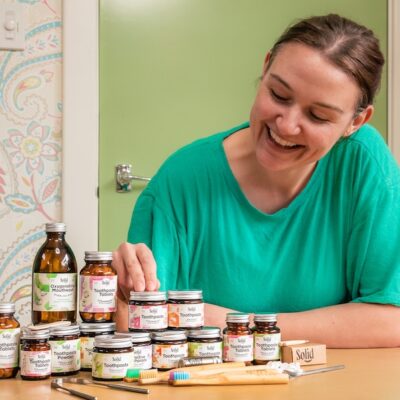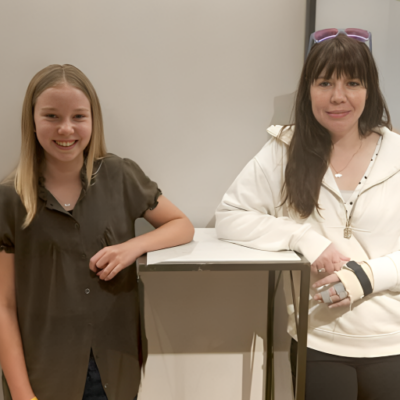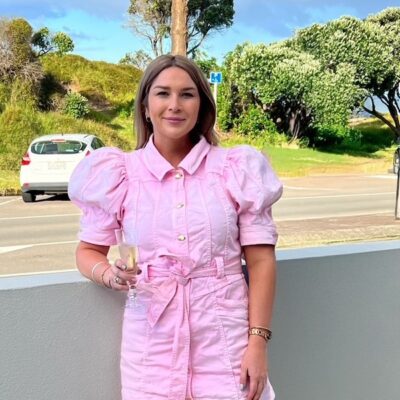A guide to creating business apps
Looking to build your own business app? Entrepreneurs Erika and Will Palmer share their experience in launching their relationship app for couples. Cupla is a brand new app for couples, founded […]
Looking to build your own business app? Entrepreneurs Erika and Will Palmer share their experience in launching their relationship app for couples.
Cupla is a brand new app for couples, founded by Erika (nee Amoore, founder of Synthony) and Will Palmer (founder of Movio).
Will and Erika had noticed that so many of their friends were using and had successfully found their life partners on dating apps, however there was nothing to support the relationship once they happily signed off Hinge or Bumble together. Dating apps were seemingly everywhere but there was nothing to support what they refer to as ‘life after the swipe’.
Their goal is to build Cupla into the number one relationship app in the world by 2025, enriching the lives of couples everywhere.
Will and Erika are a super busy Auckland couple juggling work demands, children and active social lives, and the idea for Cupla was born to address one of their very own pain points The knew they needed to prioritise date nights and ensure they made time for each other outside of work demands and children. But so often, after trying to find a mutual gap in their calendars and researching new and interesting places to go out that also matched their availability, it was easier just to stay home. In trying to find a solution they originally just thought an amazing shared calendar would solve a lot of the issues we were having, but there wasn’t anything available designed specifically for couples. And so they began to develop Cupla.
Generally in this day and age, apps are a dime a dozen. There are hundreds of apps being created every day and unless you have something truly unique and compelling it is extremely hard to get users to download it, let alone make money from it. The app world is not for the faint-hearted!
To those interested in producing their own app either to support their existing business, or to launch an entirely new one, they’ve come up with a cheat sheet, or rather a list of Do’s and Don’ts based on their own lessons from developing Cupla.
What major lessons had you learnt previously that you incorporated into the development of Cupla?
In previous ventures, we would often start with a product idea and immediately begin engineering a solution, only to discover that the problem was not one potential customers wanted solved, or if they did, the solution we built needed to be adapted significantly to meet their expectations. On other occasions, we had created excellent solutions to problems that addressed a too-smaller market.
The lesson we took from this is to first get super clear on what problem you want to solve and quantify how big of a problem actually is and for who? Once you have narrowed down the problem, the next step is to test potential solutions.
The trick here is to test and learn as cheaply and as quickly as possible. We started by designing a low cost prototype using Figma and testing the solution with potential users. This led to dozens of iterations until we had refined the solution down to our minimum viable product, all before spending a single dollar on developing the product.
Once we had validated the problem and the potential solution, the final step was to determine the size of the total addressable market (TAM) we were going after. This speaks to the financial opportunity the business will have if it correctly addresses the problem, and is one of the main variables an investor will consider when looking to fund your venture. By spending time upfront into really understanding the problem, potential solutions and the TAM, Cupla was able to attract talent and capital early in its journey.
Do’s and Don’ts:
DO: Understand the problem you are trying to solve. You should be able to articulate the problem in a sentence or two. This process of refining down the problem takes time but it’s a guiding pillar for future decisions.
DO: Research your competition. It’s important to understand your competition well. Some competition is great – it serves as validation of your idea and the market opportunity, but if its an already saturated space it might be difficult and expensive to acquire customers
DO: Test and refine. Again and again. We ran multiple rounds of user testing before we started building anything. Many of our initial ideas were tossed out . Be prepared to have conviction on your ideas but let them go easily if they aren’t working!
DO: Always hire people that believe in your purpose. Start-ups can be tough for employees as the path is not always linear, mistakes will be made, and risk is always present. Team members must have absolute conviction in what you are doing to help them navigate these tough times. Individuals who are not committed to your purpose will be to the detriment of the team, even if they are incredibly talented.
DO: Focus on important metrics – Life Time Value (LTV), Cost to Acquire (CAC), the ratio of the two, and Active Users.
- Life time value – how much will you make from each customer over their lifetime with your app
- Cost to acquire: what does it cost to attract them to your app, get them onboarded and get them active. CAC is one of the biggest challenges an app faces – you have to be able to acquire customers affordably. In a world with 5 million apps simply paying for downloads is a difficult and expensive path.
- The minimum ratio between the two (for a scalable business) should be 3:1, anything more than that will be attractive to investors.
- Number of active users is important as it talks to how big your customer base is and validates whether your product is addressing a real market need.
DON’T: Just build something to address your own needs or pain points. That is a great place to start, and it’s where we started with Cupla, but if you want your product to be a business rather than a hobby you have to understand whether your needs are shared by a wider market.
DON’T: Ignore how you will commercialize your app. The days of the ‘data-play’ are long behind us and an app with no commercial model is not a business. While it’s not essential to have this nailed down from day one, it’s important to understand the path to how you will make money from your idea.
Further advice:
Resourcing is currently the biggest challenge for tech businesses in New Zealand, and if you’re a start-up on a budget you have the added disadvantage of not being able to compete on salaries. Ensure you have a competitive ESOP (Employee Share Options Program) set up from Day one and commit to keeping at least 10% of the business aside for employees. It’s one of the major advantages your staff will get from working for a startup.
If you happen across amazing people, find ways to hire them, even if you aren’t quite ready. Finding talent is hard, particularly for startups where a certain appetite for risk is required. A great person a few months early always trumps a good person at the right time.
The main challenges we have faced so far relate to trying to launch a date-night app in the middle of a pandemic. Keep as lean and agile as you can and be prepared to change tact fast. In our case, our launch in February was quickly followed by the peak of the Omnicron outbreak and there’s no amount of marketing or positive messaging that can make people go out on date night if they just can’t or simply don’t want to! We needed to not be too wedded to one direction in such a dynamic environment and adapt our focus to other parts of the business we can control.
It’s also important to keep in mind that an app is always a work in progress, but once it’s live developing the feature set will need to be balanced against addressing feedback from users and fixing bugs. Development is impacted by the more customers you have so ensure you have a plan to manage these often conflicting demands.
What would you do differently knowing what you know now?
Of course, hindsight is always 20:20 – there would have been a quicker way to get to the product as it is if we knew what we knew now, and perhaps we might have timed our New Zealand launch to not coincide with the Omicron outbreak. But we are fairly philosophical that this is just part of our journey. We are extremely proud of Cupla and know that when couples use it as we do it will have a remarkable impact on their lives. This will take time, but we are here for it and have immense belief in the value proposition of Cupla.
Following the New Zealand launch, Cupla is set to be released in Australia later this year and the United States in 2023, before expanding into the wider international market.
Cupla is available now for download on Apple iOS with Hints and Book Now functionality via the App Store, search ‘Cupla’. Android users are able to take advantage of the ingenious calendar syncing option with Hints and Book Now to be released for Android later in the year. Instagram: www.instagram.com/cupla.auckland/ Facebook: www.facebook.com/app.cupla Website: www.cupla.app/
Pictured below: Erika Palmer.






